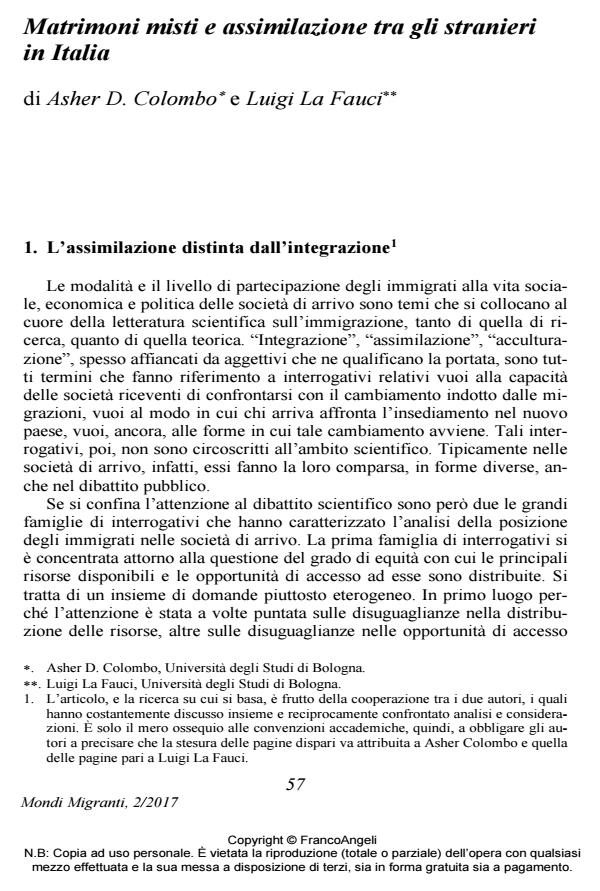Mixed Marriages and Assimilations Among Foreigners in Italy
Journal title MONDI MIGRANTI
Author/s Asher D. Colombo, Luigi La Fauci
Publishing Year 2017 Issue 2017/2
Language Italian Pages 25 P. 57-81 File size 209 KB
DOI 10.3280/MM2017-002004
DOI is like a bar code for intellectual property: to have more infomation
click here
Below, you can see the article first page
If you want to buy this article in PDF format, you can do it, following the instructions to buy download credits

FrancoAngeli is member of Publishers International Linking Association, Inc (PILA), a not-for-profit association which run the CrossRef service enabling links to and from online scholarly content.
Distinguishing assimilation from integration, an often overlooked conceptual distinction, this paper analyses a central dimension of assimilation in Italy: mixed marriages between foreigners and national citizens, their incidence and forms. Data is drawn from Istat «Condizioni e integrazione sociale dei cittadini stranieri in Italia» survey. Three main results emerge. First, mixed marriages are rare in all examined migrant groups. Second, exogamy varies greatly according to nationality and gender. Third, timing of immigration and immigrant generation influence exogamy according to nationality and gender. Further research is needed to examine the importance of sending countries, migrant communities, and immigration systems.
Keywords: Immigration; Assimilation; Mixed Marriages.
- Past and Present Migration Challenges Maria Grazia Galantino, Francesca Messineo, pp.349 (ISBN:978-3-031-39430-0)
Asher D. Colombo, Luigi La Fauci, Matrimoni misti e assimilazione tra gli stranieri in Italia in "MONDI MIGRANTI" 2/2017, pp 57-81, DOI: 10.3280/MM2017-002004